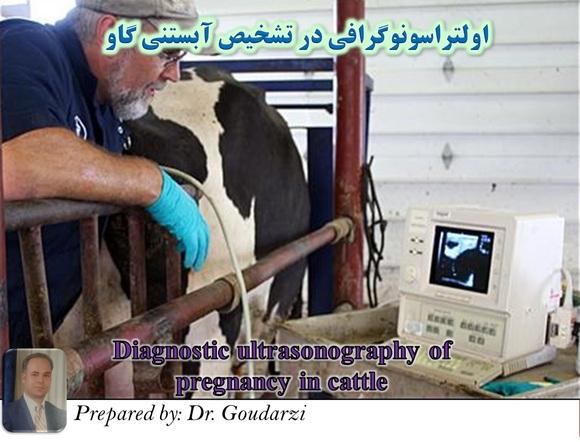Explore all the information on
Dairy reproduction and genetics
Welcome to the page about Dairy reproduction and genetics of Engormix; a source of knowledge on Dairy reproduction and genetics.
Global warming and the constant increase in cow yields aggravate the summer problem on dairy farms and increase the production losses caused to dairy producers. An important part of the losses caused is due to the negative effect of heat load on the fertility of cows that are inseminated in summer. To characterize this effect, we collected data from five large-scale, high-yield dairy farms (1,500 to 3,000 dairy cows per herd) located in the "Laguna" region of northern Mexico, characterized...
Comments : 2
Recommendations: 0
My jersey calved about a month ago we AI her last year now I want to do this again but I have had some farmers telling me that jerseys don't catch easy in the year she calved. is this true and is there anything I can do to improve her chances of having a strong heat? I am not planning on breeding her until late july. ...
Comments : 16
Recommendations: 0
Recommended events
May 14, 2024
Canada - Manitoba - Winnipeg
.jpg&w=3840&q=75)
Prof. Anna Catharina Berge from Ghent University delves into the intricate challenges faced during the critical first six months of a calf's life....
Comments : 0
Recommendations: 4
Breeding is defined as the crossing of the male and the female parents to get the off spring for the characters desired. The main breeding methods are: 1) In Breeding 2) Out Breeding They are further classified as given in the chart below: ...
Comments : 5
Recommendations: 1
Semen of most mammalian species can be sexed with greater than 90% accuracy with an instrument called a flow cytometer/cell sorter. Unfortunately, the process is slow relative to the number of sperm in a typical artificial insemination dose. Furthermore, the process damages sperm, although to a lesser degree than current procedures for cryopreservation. Because of these limitations, commercially available sexed semen for artificial insemination has lower sperm numbers per...
Comments : 5
Recommendations: 0
Approximately 40 percent of calves that require partial assistance at birth die immediately or later (those that survive are more likely to develop respiratory and digestive problems later in life). Dystocia is associated with 50% pre-weaned calf mortality, each dairy should implement a dystocia management program and use management practices that limit the occurrence and impact of dystocia. ...
Comments : 1
Recommendations: 2
In order to manage reproductive production and also to increase the yield of dairy cattle, identifying pregnant and non-pregnant cows is a necessity. A precise examination of the reproductive system for diagnosis of pregnancy, Estimation of embryonic age, examination of pathological and physiological conditions of the reproductive system, it is necessary to manage the herd correctly....
Comments : 0
Recommendations: 0
The recto-vaginal technique is the most commonly used method to artificially inseminate cattle. The basic skills required to perform this technique can be obtained with about three days practice under professional instruction and supervision. Additional proficiency and confidence will be achieved with further work on your own. The first step in the insemination process is to restrain the animal to...
Comments : 9
Recommendations: 2
I would like to open a discussion on the top breed(s) of goat for dairy production suitable for hot/dry climates.
Moreover, how to best source these breeds to guarantee the right genes for dairy production....
Comments : 0
Recommendations: 0
Artificial insemination (AI) is a process by which sperm are collected from the male, processed, stored and artificially introduced into the female reproductive tract for the purpose of conception. AI has become one of the most important techniques ever devised for the genetic improvement of farm animals. It has been most widely used for breeding dairy cattle and has made bulls of high genetic merit available to all. HISTORY OF...
Comments : 2
Recommendations: 0
.jpg&w=3840&q=75)
Kevin Ziemba, Eastern USA Manager at STgenetics talks about the the current situation in the dairy industry, sustainability and efficiency, genetics and the importance of strategy and profitability....
Comments : 0
Recommendations: 1
Ruminant nutrition is highly sophisticated. Immense research and application efforts have culminated in great successes. Today, we can satisfy with a relative high precision the nutritional needs of high producing dairy cows. Highly efficient genetic selection and improvement in overall management has resulted in a national average of ca. 10,000 kg of milk per year in USA. The 2012 USDA annual report indicated an average of 9,842 kg milk produced in one year (or...
Comments : 3
Recommendations: 3
Background Providing adequate amounts of essential minerals is critical to maintain health and maximize productivity of dairy cows (NRC, 2001). Organic minerals can be described as nutritionally essential minerals attached to a carbon–hydrogen based molecule which acts as a ligand. Ligands that are used most frequently include amino acids, peptides and proteins. In particular, complexes where a mineral is bonded to amino acids with at least two bonds from each amino acid...
Comments : 0
Recommendations: 2
Objective The aim of this work was to compare the parameters of an in vitro embryo production program of cows of different breeds in Paraguay. Materials and methods A total of 4811 OPU sessions were performed between 2016 and 2019 in cows classified according to their breed. Beeftype breeds: Nelore (Bos indicus): n = 1569; Aberdeen Angus (Bos taurus): n = 1276; and Brangus (Cross): n = 182 OPU, and Gyr (Bos indicus):...
Comments : 0
Recommendations: 1
Proper semen handling is essential to maintain optimum reproductive performance of your AI breeding program. To maintain the high quality of semen you purchased from your Select Sires representative, you must pay strict attention to the many details of semen handling outlined is this brochure. SEMEN PACKAGING AND STORAGE Select Sires packages conventional semen in ½ milliliter straws. Gender Selected semen and...
Comments : 1
Recommendations: 0
Introduction Genetic variability of livestock populations is fading. This is due, in part, to genetic improvement programs (FAO, 1998; Gutiérrez and Goyache, 2005). Boichard et al. (1997) mentioned that change in genetic variability across generations could be described by genealogical characterization; and the conservation and consanguinity status of populations can be monitored (Vicente et al., 2012; Pienaar et al., 2015). Genealogical analysis requires the creation and...
Comments : 0
Recommendations: 0
...
Comments : 1
Recommendations: 2
A breed is a group of related animals with similar characters like general appearance, size, features and configuration etc. Often, breeds resemble each other with slight morphological differences, but because of constant inbreeding in one locality, independent breeds have evolved. In general, the cattle from drier regions are well built and those from heavy rainfall areas, coastal and hilly regions are of smaller build. There are total 231 breeds of cattle in...
Comments : 20
Recommendations: 1
INTRODUCTION Bovine viral diarrhea virus (BVDV) has been classified within the genus Pestivirus of the family Flaviviridae (Wengler et al., 1995). It has a positive single-stranded RNA genome of approximately 12.3kb size, encoding one open reading frame (ORF) that is translated into a single polyprotein of about 4000 kDa (Collett et al., 1988; Meyers and Thiel, 1996). The polyprotein is subsequently cleaved into 4 structural and 6 to 7 non-structural proteins by viral and...
Comments : 0
Recommendations: 1
Dairy nutritionists are beginning to fine-tune buffer feeding and macromineral nutrition recommendations according to the difference in cation and anion concentrations in the diet. Numerous papers on feeding buffers, macromineral recommendations, and dietary cation-anion difference (DCAD) concepts have appeared recently in the scientific literature and popular press. The objective of this paper and presentation will be to deliver only the newest information on this subject for the postpartum...
Comments : 3
Recommendations: 0









.jpg&w=3840&q=75)









